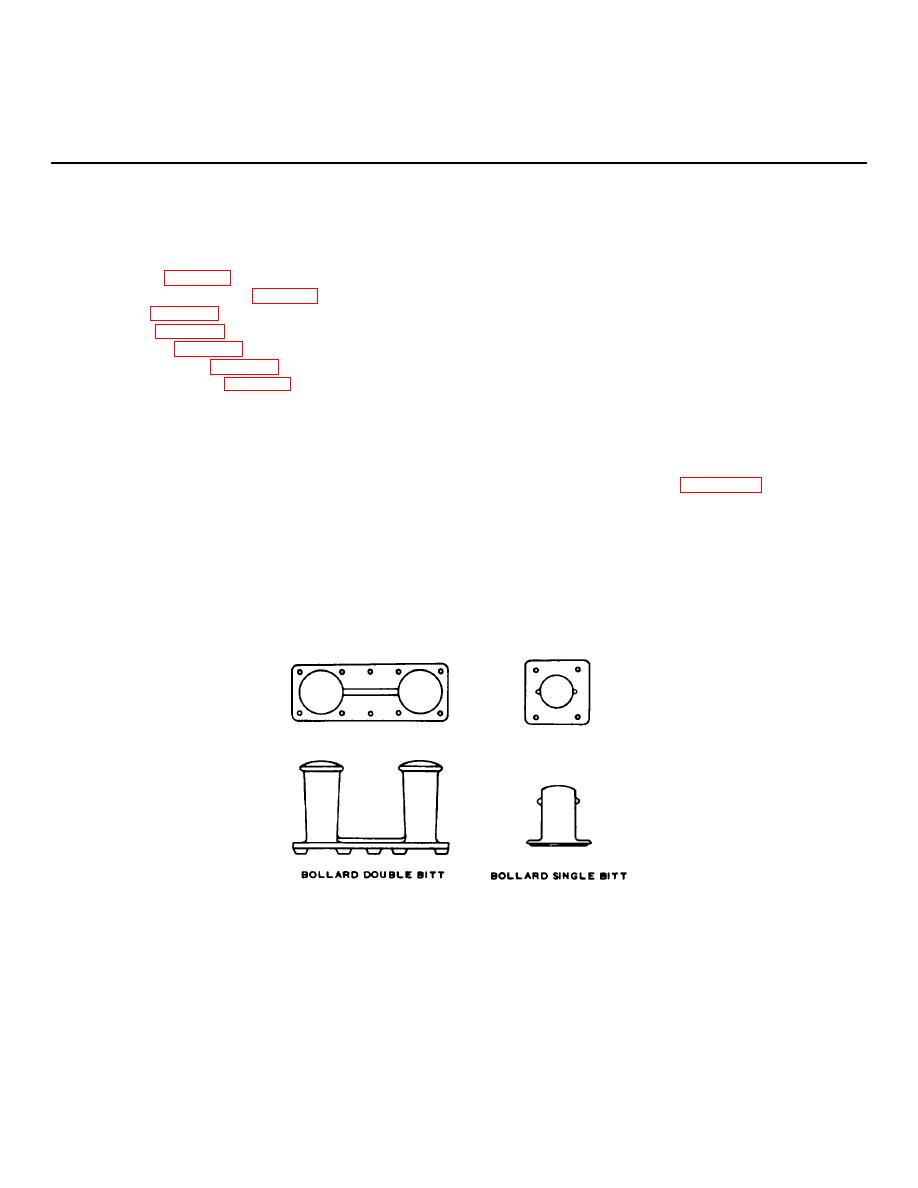
TM 5-850-1
CHAPTER 10
MOORING DEVICES
10-1. Typos.
type of device and its anchorage. These devices and
The types of mooring devices most commonly used in
their anchorages should be designed to withstand a
the berthing of both deep and shallow-draft vessels are
force 50 percent greater than the breaking strength of an
as follows:
attached hawser. The mooring force may be assumed
a.
in its most unfavorable design position, which is
Bollards(fig. 10-1)
b.
ordinarily horizontal and perpendicular to the long axis
Corner mooring post (fig. 10-2)
c.
of the device when under stress. Furthermore, the
Cleats(fig. 10-3)
d.
capacity of a device of given size and shape will be
Chocks(fig. 10-4)
e.
affected by the type of metal used in its manufacture.
Pad eyes (fig. 10-5)
f.
Devices are normally available in cast iron, ductile iron,
Power capstan (fig. 10-6)
or cast steel in various stress-grades of each metal.
g.
Releasing hooks (fig. 10-7)
b. Spacing. The types and spacing chosen for a
10-2. Capacity and spacing.
specific berth should be based upon the characteristics
and convenience of the using vessel.
A typical
Mooring devices should be adequate in size, number,
arrangement of mooring devices to service both small
and spacing to resist the forces of wind, current, waves,
and large vessels is shown in figure 10-8.
ice, and other related natural elements.
10-3.
Anchorage.
a. Capacity.
Mooring devices are sometimes
assigned design capacities by the manufacturers.
Mooring devices should be anchored firmly to their
However, the specific operating conditions at a given
supporting structure. The uplift, horizontal forces, and
berth should be considered in assessing the capacity of
overturning moments may be considered in selecting
any
types of anchorage.
Department of the Army
Figure 10-1. Single and double bitt bollards
10-1


 Previous Page
Previous Page
